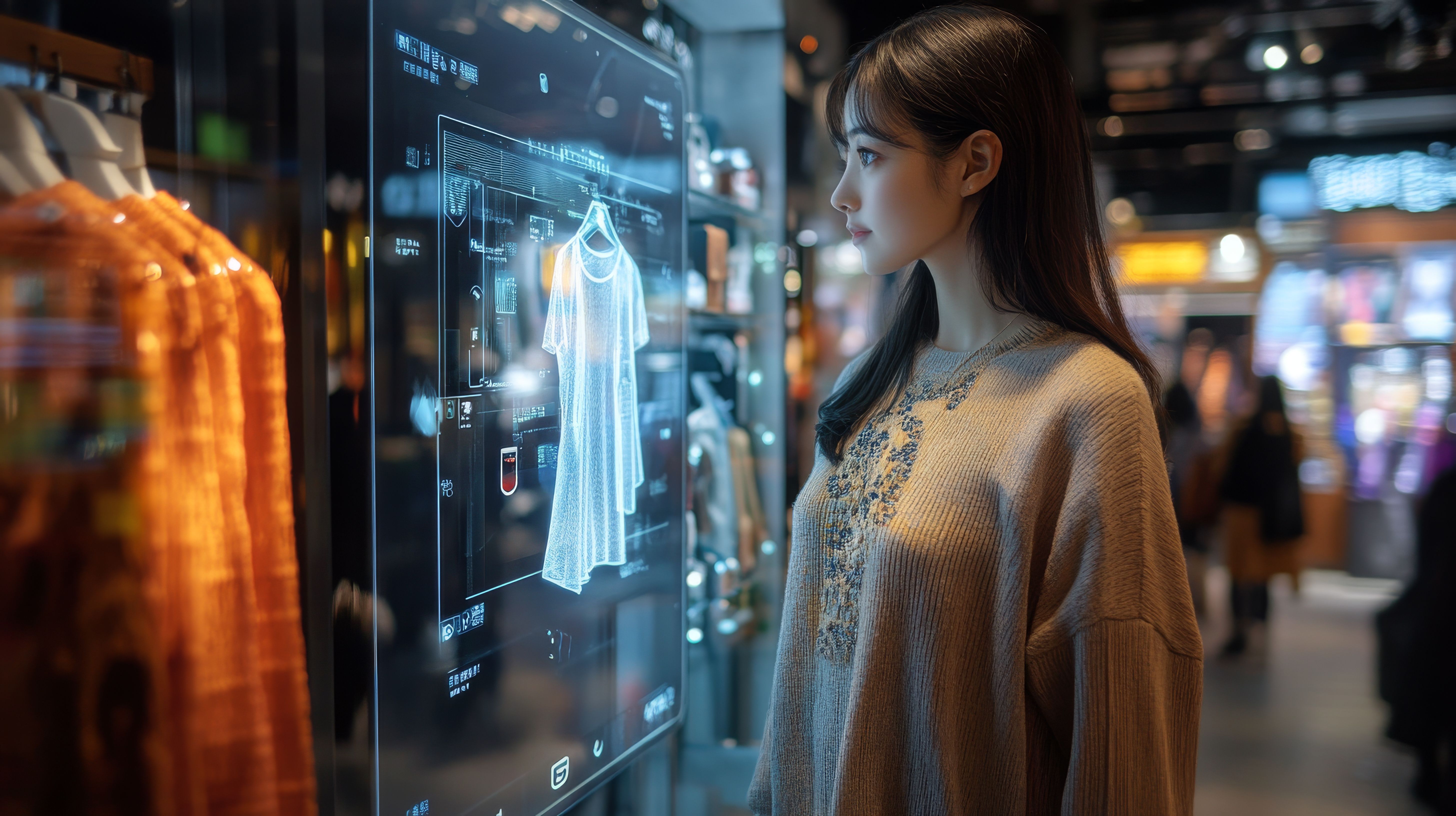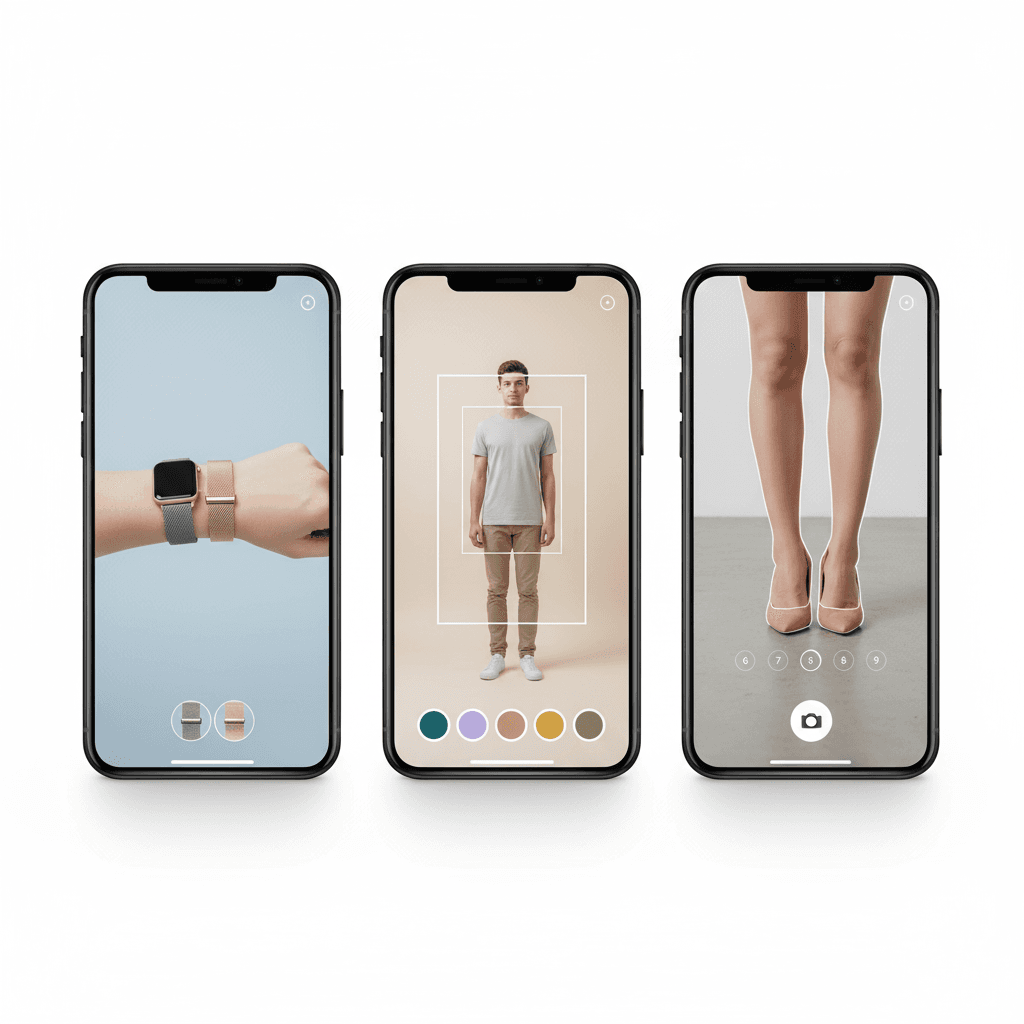How AI Automation Is Changing Online Businesses?
Generative AI Overview: Training, Use Cases & Business Impact


TL;DR
Generative AI isn’t just another tech trend — it’s changing how we create, learn, and do business. From writing copy to designing products, generative models can now produce text, visuals, and code faster than ever. In this generative AI overview, we’ll explain how it works, what makes it different from traditional AI, and why it’s now driving business innovation. Most industries — from healthcare to retail — will rely on generative AI for business to save time, cut costs, and spark creativity.
Introduction: The Rise of Generative AI
Generative AI (GenAI) is more than a buzzword — it’s a revolution in how humans and machines collaborate. Unlike traditional AI systems that predict or classify, generative AI creates new content. It can draft blog posts, generate realistic images, compose music, or even simulate new molecules for drug research.
Today, models like ChatGPT, Google Gemini, and Stable Diffusion are pushing this technology into everyday tools — from shopping assistants to business automation platforms like Glance AI.
According to Statista (2025), the global generative AI market is expected to surpass $66 billion, growing more than tenfold since 2022. Businesses aren’t just automating; they’re co-creating with AI.
This generative AI overview will break down how it works, what powers it, and how it’s becoming the foundation of modern business and creativity.
From Prediction to Creation – How Generative AI Works
Generative AI models are trained to recognize and reproduce patterns found in massive datasets — text, images, audio, or video. Instead of labeling data, these models generate new examples that look and feel authentic.
Key Difference Between Traditional and Generative AI
Traditional AI | Generative AI |
Predictive | Creative |
Outputs labels or numbers | Outputs new content |
Example: fraud detection | Example: ChatGPT writing an article |
Generative AI relies on complex neural networks, including transformers, diffusion models, and GANs (Generative Adversarial Networks). Together, these systems allow AI to understand context and produce human-like results.
What Powers Generative AI: Core Model Architectures
The generative AI overview includes four major architectural milestones that shaped how models learn and create:
1. Markov Chains (Early Foundations)
These early models predicted the next word in a sequence using probability. They formed the foundation for autocomplete and early chatbot systems.
2. GANs – Generative Adversarial Networks
Introduced in 2014, GANs pit two AIs — a generator and a discriminator — against each other. This tug-of-war forces the AI to create more realistic results. Today, GANs are used in deepfake creation, art generation, and synthetic data simulation.
3. Diffusion Models
Diffusion models — like Stable Diffusion and Midjourney — start with random noise and gradually “denoise” it into detailed images. They are behind today’s ultra-realistic visuals and AI art.
4. Transformer & LLMs (Large Language Models)
Introduced by Google in 2017, Transformers are now the backbone of modern generative AI. They enable models like GPT-4 and Gemini to “understand” context, tone, and relationships between words, generating coherent, human-like responses.
How Generative AI Actually Works
Here’s a simplified step-by-step breakdown:
- Input (Prompt): You type or speak a command (“Write a product ad for sneakers”).
- Tokenization: The text is split into tiny units (“tokens”) for analysis.
- Processing: The AI interprets context through billions of internal parameters.
- Generation: It produces new text, image, or sound that fits your intent.
- Filtering: Results pass through safety and quality filters to ensure accuracy.
- Output: You receive polished, human-like content.
Every interaction you’ve had with ChatGPT, DALL·E, or Glance AI follows this same framework.
Training Generative AI – From Data to Deployment
Training a generative AI model isn’t just about feeding it data and waiting for magic. It involves carefully structured stages of learning, architecture design, resource investment, and constant refinement. This section will break down how modern generative AI systems—like ChatGPT, Gemini, and Stable Diffusion—are trained from the ground up.
Step-by-Step: How Generative AI is Trained
Stage | Description |
Data Collection | Billions of text documents, images, videos, or audio files scraped or licensed from the internet and databases. |
Data Cleaning | Filtering out biased, harmful, low-quality, or duplicated content. |
Tokenization | Breaking content into "tokens" (e.g., words or pixels) for processing. |
Pretraining | Using unsupervised learning to understand patterns across massive datasets. |
Fine-Tuning | Narrowing model capabilities on specific tasks (e.g., summarization or translation). |
Reinforcement Learning (RLHF) | Incorporating human feedback to teach the model to align with social, ethical, or brand values. |
Deployment | Hosting the model on scalable infrastructure for public or enterprise use. |
Generative AI Training Requires Enormous Resources
To give you an idea of the scale:
- GPT-4 reportedly trained on 1+ trillion words.
- Training a model like this requires thousands of GPUs and weeks or months of compute time.
- Estimated training cost for a state-of-the-art model can exceed $100 million USD.
This is why companies like OpenAI, Google DeepMind, Meta, and Anthropic dominate the generative AI overview space—they have both the data and infrastructure to build models of this magnitude.
Why Training Matters to You (Even If You’re Not a Developer)
For users or businesses, understanding training helps demystify what a model can and can’t do:
- A model trained on business documents will perform better at summarizing reports.
- A model trained on medical literature (e.g., MedPaLM by Google) can answer health-related queries more reliably.
- If a model is trained on older data, it might hallucinate or miss current events.
Knowing what your GenAI was trained on—and how recently—can shape how much you trust its output.
Why Understanding AI Training Matters for You
You don’t need to be a developer to care about AI training. It affects how reliable your AI results are.
- A model trained on up-to-date data gives more accurate answers.
- A model trained on business content performs better for corporate tasks.
- A model fine-tuned with human feedback aligns better with your tone and ethics.
In short: the better the training, the smarter and safer the output.
Real-World Use Cases – Where Generative AI is Already Making Waves
Generative AI is already woven into our digital lives in more ways than most people realize. From automating content to optimizing workflows, here are the key domains where GenAI is being actively applied in the U.S. and globally.
1. Content Creation
- Text: Blog writing, email generation, SEO copy (e.g., Jasper, ChatGPT, Copy.ai).
- Images: Logos, marketing graphics, social posts (e.g., Midjourney, DALL·E).
- Video: Short-form content, avatar videos, ad creatives (e.g., Synthesia, Runway ML).
- Audio: AI voiceovers, podcast scripts, music generation (e.g., ElevenLabs, Soundraw).
Use case: A solopreneur in Texas automates weekly newsletters using ChatGPT and Canva AI, saving 6 hours per week.
2. Business and Productivity Tools
- Email summarization (e.g., Gmail + Gemini)
- Meeting note generation (e.g., Otter.ai, Fireflies)
- Excel AI assistants (e.g., Microsoft Copilot)
- Customer support automation (e.g., Intercom Fin, Zendesk AI)
Use case: A growing e-commerce startup in California uses AI to manage customer service tickets, reducing human agent workload by 50%.
3. Commerce & Retail
- Product description generation
- Personalized product recommendations
- Virtual shopping assistants
- AI-generated try-ons and lookbooks
Use case: Platforms like Glance AI offer AI-powered shopping suggestions based on trends, body shape, budget, and event type.
4. Healthcare and Science
- Drug discovery (e.g., atom-wise compound generation)
- Radiology image generation
- Medical chatbot assistants
- Synthetic data creation for rare diseases
Use case: A Boston-based biotech firm uses generative AI to simulate protein folding, speeding up R&D by 3x.
Generative AI for Business Impact – Why Enterprises Are All In
Generative AI overview isn’t just a productivity hack—it’s quickly becoming a strategic business advantage. From Fortune 500 companies to SMBs, organizations are leveraging GenAI to optimize operations, reduce costs, and launch personalized experiences at scale.
Key Benefits for Businesses Using Generative AI
Impact Area | How GenAI Delivers |
Cost Savings | Automates content creation, customer support, internal documentation, and HR tasks. |
Faster Time-to-Market | Quickly generates product copy, design concepts, ad campaigns, and pitch decks. |
Hyper-Personalization | Customizes user experiences, product recommendations, and marketing across channels. |
Boosted Innovation | Aids in creative brainstorming, prototyping, and generating ideas for product development. |
Scalable Operations | Handles high volumes of queries, content, and requests without scaling headcount. |
Enterprise Use Cases by Function
Business Function | Example Use of Generative AI |
Marketing | Campaign ideas, product descriptions, social content, A/B test copy |
Sales | Personalized email cadences, objection handling scripts, demo prep |
Customer Support | AI chatbots, multilingual ticket resolution, intent classification |
HR & People Ops | Resume parsing, onboarding workflows, culture-based policy writing |
R&D/Product | Prototype generation, idea iteration, simulation-based design |
Finance & Ops | Forecast modeling, report generation, smart dashboards |
Did you know? According to a McKinsey report (2024), businesses that embed GenAI into their core operations see a 10–20% increase in productivity within the first year.
The Future of Generative AI – Emerging Trends to Watch
As generative AI matures, it’s no longer just about generating content—it’s evolving toward becoming an integral part of intelligent, adaptive systems. Here’s a glimpse into what lies ahead:
1. Multimodal AI Goes Mainstream
Generative AI is quickly advancing from text-only tools to multimodal systems that combine text, image, audio, and video generation. Tools like Google Gemini and OpenAI’s GPT-4o are already capable of:
- Generating marketing videos from blog text
- Designing web pages from hand-drawn wireframes
- Creating voiceovers and avatars for e-learning
Expect mainstream adoption in advertising, e-commerce, education, and entertainment.
2. AI Agents Will Handle Workflows End-to-End
The rise of multi-agent systems—where multiple AIs collaborate—is pushing GenAI from tool to autonomous assistant. These agents will:
- Schedule meetings
- Book travel with preferences
- Conduct research and deliver summaries
- Manage campaigns with real-time learning
Example: A product manager can soon brief an AI once, and the AI will handle brainstorming, competitor analysis, presentation design, and launch emails.
3. Composable AI Infrastructure
Enterprises are shifting toward composable AI stacks—where GenAI tools plug into CRMs, ERPs, and CMSs via APIs. This enables:
- Seamless integration with internal systems
- Context-aware generation (e.g., auto-generating invoices based on CRM data)
- On-demand deployment of models for specific business needs
4. Generative AI Meets Circular Economy
From recycled content generation to AI-led upcycling in fashion and predictive waste reduction in logistics, GenAI is finding novel ways to:
- Support sustainable product design
- Predict optimal inventory
- Reduce overproduction and waste
5. Immersive Experiences: VR, AR, and AI
Imagine shopping for clothes in a virtual mall powered by AI avatars, attending concerts in AI-generated environments, or testing furniture in your AR-powered home—all curated by your preferences. It’s coming, and fast.
Getting Started – Training, Tools & Responsible AI
If you’re new to generative AI, or looking to scale your skills and systems responsibly, here’s how to begin:
Generative AI Training Resources (for Individuals & Teams)
Platform | What It Offers |
Google AI Learn | Intro courses to LLMs, prompt engineering, Gemini APIs |
OpenAI Guides | Tutorials on GPT models and usage best practices |
AWS Skill Builder | GenAI model training and deployment with SageMaker |
DeepLearning.AI | Specialized GenAI courses via Coursera |
Tip: Start with prompt design and safety frameworks, then branch into fine-tuning and deployment.
Popular Generative AI Tools
- ChatGPT (OpenAI) – Text generation, ideation, customer service
- Midjourney / DALL·E – Visual and design content
- Runway ML – Video editing and generation
- Jasper AI – Marketing copy and ad automation
- Glance AI – Personalized commerce and product styling assistance
- Gemini (Google) – Multimodal model for enterprise tasks
Responsible Use of Generative AI
AI-generated content brings ethical responsibilities. To ensure safe and respectful use:
- Apply content filters and moderation layers
- Avoid biased training data or outputs
- Use citation-aware models when dealing with research
- Disclose AI involvement in public-facing content
- Design with fairness and accessibility in mind
Tools like Vertex AI, AWS Bedrock, and Azure OpenAI provide built-in safety, grounding, and auditing.
Wrap Up
Generative AI overview is more than a trend—it’s a seismic shift in how we produce content, solve problems, and innovate across industries. From personalized marketing and smarter customer service to real-time content creation and intelligent automation, GenAI is revolutionizing business and creativity alike.
Its ability to generate text, images, code, and even strategy in seconds makes it a powerful tool for individuals and organizations. As accessibility improves, even non-technical users can leverage tools like ChatGPT, Gemini, and Glance AI to boost productivity and innovation.
The future lies in co-creation—where humans set intent, and AI amplifies output. Whether you're a startup founder, student, or enterprise executive, understanding and using generative AI will be essential.
Now is the time to engage, experiment, and evolve—because with GenAI, we’re not just consuming technology anymore; we’re actively shaping what comes next.
FAQs Related to Generative AI Overview
- What is generative AI and how does it work?
Generative AI is a type of artificial intelligence that creates new content, such as text, images, audio, or music. It works by learning patterns from large datasets and using deep learning models to generate outputs that resemble human creativity, often based on user prompts. This enables applications like realistic image creation, conversational text, and automated content generation. - How is generative AI different from traditional AI models?
Traditional AI focuses on analyzing existing data to make predictions, classifications, or decisions. Generative AI, in contrast, creates entirely new content, such as text, images, code, or music, by learning patterns from data and generating outputs based on user prompts. This makes it more creative and versatile than conventional AI models. - What are the main use cases of generative AI ?
Main use cases of generative AI include content creation, marketing copywriting, customer service automation, product and fashion design, personalized learning, healthcare imaging, and generating synthetic data for AI model training. These applications help businesses innovate, boost efficiency, and deliver tailored experiences across industries. - Why is generative AI important for businesses today?
Generative AI is crucial for businesses today because it enhances productivity, automates repetitive tasks, and reduces operational costs. It also enables personalized customer interactions, faster content creation, and innovation, making it a strategic advantage across industries such as retail, media, finance, and healthcare.
5. Can anyone learn to use generative AI without coding
skills?
Yes, anyone can use generative AI without coding skills. Many platforms provide intuitive, no-code tools that let users create text, images, music, and other content, automate tasks, and build prototypes, all without programming knowledge. These tools make AI accessible for beginners, creatives, and professionals alike.






